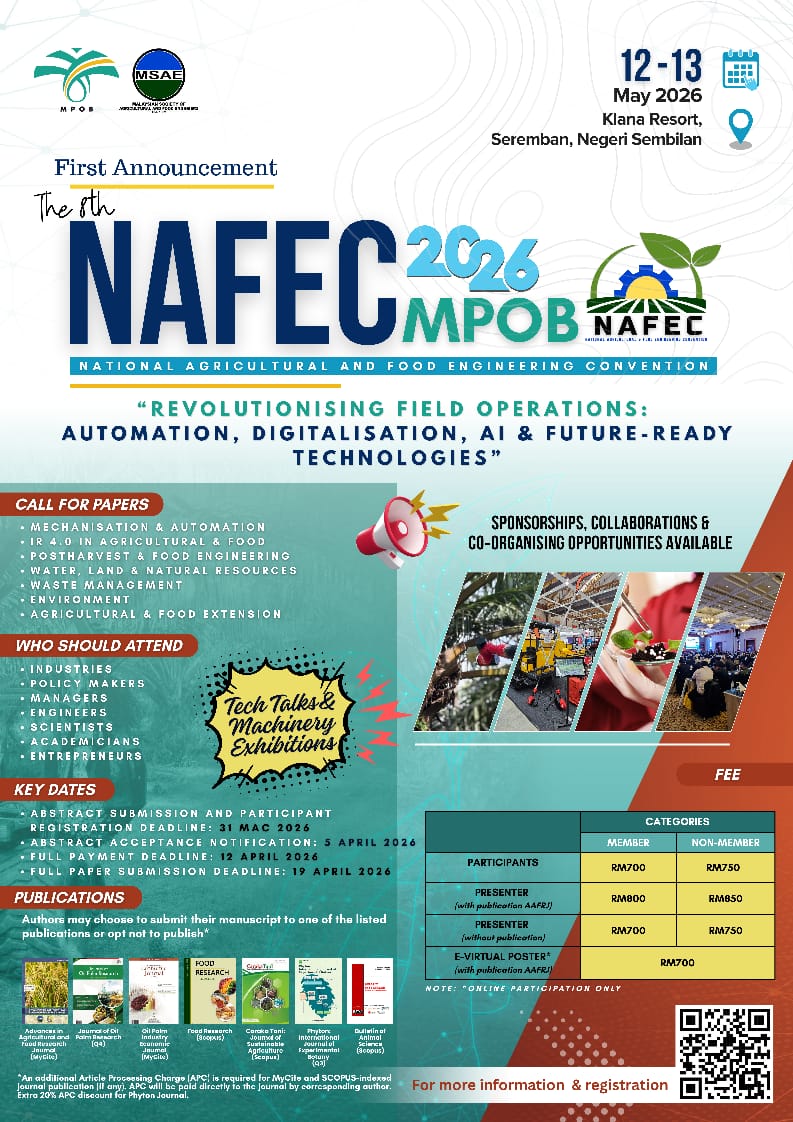Effect of Interchanging Red and Blue LED Irradiation Sequence on Growth of Lettuce
DOI:
https://doi.org/10.36877/aafrj.a0000360Abstract
Light-emitting diode (LED) is commonly employed as supplementary light sources to enhance plant growth and quality. Nowadays, a combination of red (R) and blue (B) LED sources is mainly used since it can boost plant photosynthesis rate and biomass. Generally, both light sources are continuously irradiated for 16–18 hours for plant photoperiod, which may result in high electricity costs. Therefore, interchanging use of red and blue LED irradiation is introduced to reduce the use of electricity, thus minimising the operating cost. In this study, a growth chamber with red and blue LED was constructed and its intensity and power distribution were assessed. The effect of blue and red LED irradiation sequence on plant growth parameters and chlorophyll content was examined. Three light treatments over a period of 16 hours (RB16 - 16 hours constant simultaneous (R) and (B) light, R4/B4 - 4 hours interval interchanging R and B light and R8/B8 - 8 hours interval interchanging R- and B-light) were exposed to lettuce under controlled room temperature. Results revealed that the different light treatments influence lettuce plant morphology such as plant height, leaf width and leaf number. However, the results are similar for fresh and dry mass, and chlorophyll concentration. It is found that, both plant height and leaf width were the highest under R4/B4 and RB16, respectively. Such findings would be extremely valuable information on the use of interchanging LED irradiation in plant development for commercial production, resulting in optimized power consumption.
Downloads
Published
How to Cite
Issue
Section
License
Copyright (c) 2023 Nur Fathin Syahirah Romli, Mohd Fauzie Jusoh, Muhammad Firdaus Abdul Muttalib

This work is licensed under a Creative Commons Attribution-NonCommercial 4.0 International License.
Author(s) shall retain the copyright of their work and grant the Journal/Publisher right for the first publication with the work simultaneously licensed under:
Creative Commons Attribution-NonCommercial 4.0 International (CC BY-NC 4.0). This license allows for the copying, distribution and transmission of the work, provided the correct attribution of the original creator is stated. Adaptation and remixing are also permitted.

This broad license intends to facilitate free access to, as well as the unrestricted reuse of, original works of all types for non-commercial purposes.
The author(s) permits HH Publisher to publish this article that has not been submitted elsewhere.

.png)

.jpg)



